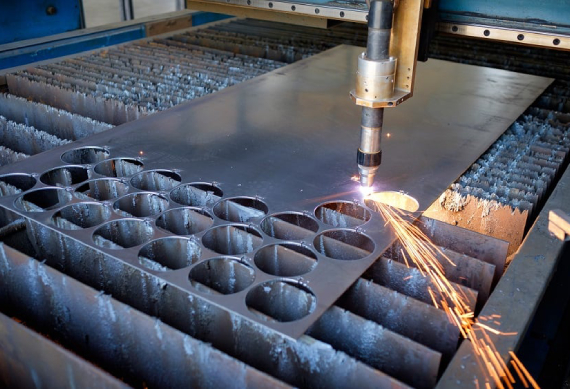
Plasma Cutting
Plasma cutting is a process of cutting through metal materials using a high-velocity jet of ionized gas, known as plasma. The plasma is created by passing an electric current through a gas such as nitrogen, oxygen, or argon, which creates a high-temperature plasma arc that can cut through metal.
The process of plasma cutting involves a plasma torch, which is typically mounted on a CNC (computer numerical control) machine that follows a programmed cutting path. The torch uses a nozzle to focus the plasma arc onto the metal surface, which melts and vaporizes the metal, creating a cut.
Plasma cutting is a versatile cutting method and can be used on a range of metals, including steel, aluminum, and stainless steel. It is commonly used in industries such as automotive, manufacturing, and construction for applications such as cutting sheet metal, pipe, and structural steel.
Plasma cutting offers several advantages over other cutting methods, including fast cutting speeds, low heat affected zones, and minimal material distortion. It is also a cost-effective cutting method for small to medium-sized jobs, as it requires minimal setup time and can cut through thick materials quickly.
However, plasma cutting does have some limitations. It produces a rougher cut edge compared to other cutting methods such as laser cutting, and the cut quality may be affected by factors such as the thickness of the material, the type of gas used, and the cutting speed. Additionally, the process generates fumes and noise, which may require proper ventilation and hearing protection.
© Copyright 2025 Al Najma Factory All Rights Reserved. Designed By: OnDigma InfoTech













